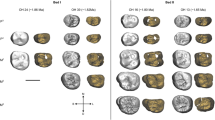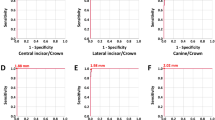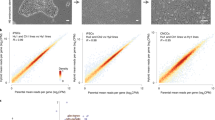Abstract
HERTER1 examined the skulls of six hedgehogs, Erinaceus europaeus L., from Hawke's Bay, New Zealand, and found that three of them had dental abnormalities. One animal lacked both lower second incisors and the gap between the first and second premolars was wider than usual. The first two right premolars had not erupted in another animal, while a third hedgehog lacked a second lower incisor, and the canine on that side had moved forward to take its place. All thirty North European hedgehogs, compared with these New Zealand animals, had normal sets of teeth. Herter suggests that this abnormality may have resulted from a mutation which has occurred since the hedgehog's introduction to New Zealand seventy years ago.
This is a preview of subscription content, access via your institution
Access options
Subscribe to this journal
Receive 51 print issues and online access
$199.00 per year
only $3.90 per issue
Buy this article
- Purchase on SpringerLink
- Instant access to full article PDF
Prices may be subject to local taxes which are calculated during checkout
Similar content being viewed by others
References
Herter, K., Zoologische Beiträge, 6, 347 (1961).
Barrett-Hamilton, G. E. H., and Hinton, M. A. C., A History of British Mammals (Gurney and Jackson, London, 1910–21).
Wodzicki, K. A., Introduced Mammals of New Zealand, D.S.I.R. Bull., 98 (1950).
Author information
Authors and Affiliations
Rights and permissions
About this article
Cite this article
BROCKIE, R. Dental Abnormalities in European and New Zealand Hedgehogs. Nature 202, 1355–1356 (1964). https://doi.org/10.1038/2021355b0
Issue date:
DOI: https://doi.org/10.1038/2021355b0



